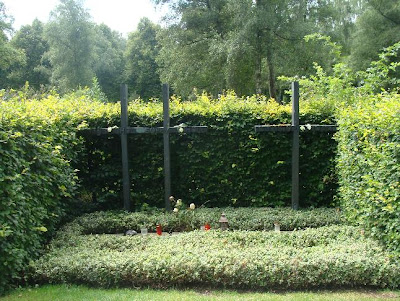Philosophy as therapy?
Earlier this week, the Washington Post published a story on the growing field of philosophical counseling. Here's an excerpt:
Patricia Anne Murphy is a philosopher with a real-world mission.To read the rest, click here. For some reason, reading this article made me recall Pierre Hadot's book Philosophy as a Way of Life, which sought to retrieve the ancient understanding of philosophy as a practical approach to everyday living. If philosophy can be a way of life, can it also be a form of therapy? Consider this quotation from the WaPo article, taken from a woman who turned to a philosophical counselor to help her deal with relationship difficulties:
Murphy may have a PhD and an intimate knowledge of Aristotle and Descartes, but in her snug Takoma Park bungalow, she’s helping a broken-hearted patient struggle through a divorce.
Instead of offering the wounded wife a prescription for Effexor — which she’s not licensed to do anyway — she instructs her to read Epictetus, the original cognitive therapist, who argued that humans often mistake their feelings for facts and suffer as a result.
Murphy is one of an increasing number of philosophical counselors, practitioners who are putting their esoteric learning to practical use helping people with some of life’s persistent afflictions. Though they help clients cope with many of the same issues that conventional therapists do — divorce, job stress, the economic downturn, parenting woes, chronic illness and matters of the heart — their methods are very different.
They’re like intellectual life coaches. Very intellectual. They have in-depth knowledge of Jean-Paul Sartre’s existentialist theories on the nature of life and can recite passages from Martin Heidegger’s phenomenological explorations of the question of being. And they use them to help clients overcome their mother issues.
"I wasn’t depressed or fighting bipolar disorder. I didn’t need Paxil. I just needed the skills to think clearly about what went wrong . . . I heard online about these shrink-thinker types who used John Milton, Adam Smith and Socrates, and I called right away. I wanted to know how our greatest minds would see my situation."Leaving aside the question of whether or not John Milton should be regarded as a "philosopher," I do think that this anonymous counselee is on to something. At different times, we all face crises or dilemmas which do not require medical intervention and do not oblige us to 'get in touch with our feelings' or to 'listen to our hearts' or to embrace the perspective of a particular school of psychology in hopes of finding a solution. In many cases, all that we really need are "the skills to think clearly" - skills that can often be honed through philosophical inquiry. Philosophical counseling cannot solve every problem - neither can psychotherapy or psychiatric treatment - but, as the WaPo suggests, it may be just the help that some people need.
What does all of this mean for me as a teacher of philosophy? I am not a licensed counselor, and I certainly don't think of teaching as a form of therapy. Nonetheless, I do seek to persuade my students that philosophy is relevant to their everyday lives. In every course that I've taught, I have sought to transmit knowledge that will be meaningful to students long after the course has ended. I am committed to the idea that knowledge is its own good, worth having regardless of whether it has any visible utility, but I also believe that philosophy can provide a training in practical reasoning that can be usefully applied to real-world problems. If some of what I teach helps students to deal with the dilemmas that they will face in the future, I will have offered them something good.
In a week when I'm intensely focused on preparations for the start of the fall semester - which begins here next Monday - I ask your prayers for me and my colleagues on the faculty as we look forward to a new academic year. Please pray also for our students as they prepare to grapple anew with the wisdom of the ages. AMDG.







































